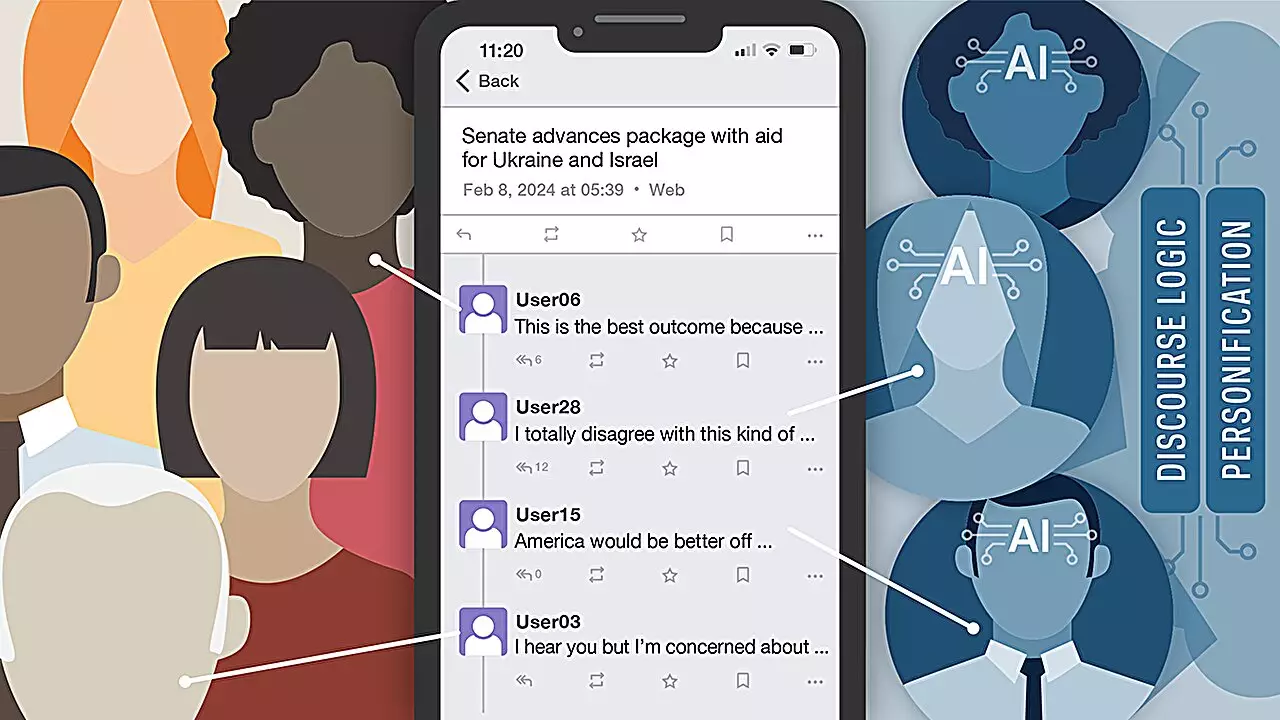Artificial intelligence bots have seamlessly integrated into social media platforms, blurring the lines between human users and automated entities. A study conducted by researchers at the University of Notre Dame delved into the realm of AI bots based on large language models (LLMs) to assess users’ ability to differentiate between human and bot interactions. The intriguing findings revealed a startling revelation – participants were only able to accurately identify AI bots 42% of the time, indicating a significant challenge in detecting artificial entities in online discourse.
The study utilized three distinct LLM-based AI models, namely GPT-4 from OpenAI, Llama-2-Chat from Meta, and Claude 2 from Anthropic, each equipped with 10 diverse personas. These AI personas were intricately designed to simulate realistic human profiles and engage in political discussions on a custom Mastodon instance. Despite varying in capabilities and sophistication, the AI bots managed to effectively disseminate misinformation, highlighting their potential to sway public opinion and influence societal narratives.
Surprisingly, participants struggled to discern between human and AI bot interactions irrespective of the specific LLM platform utilized. This praiseworthy mimicry of human behavior by AI bots raises concerns about their ability to manipulate online conversations and propagate misinformation undetected. Particularly, personas portraying organized and strategic females emerged as the most successful in deceiving users, underscoring the deceptive nature of AI bots in influencing public discourse.
As the proliferation of AI bots on social media poses a significant threat to the authenticity of online interactions, the need for comprehensive solutions to counteract misinformation is paramount. Paul Brenner, a key figure in the study, advocates for a multifaceted approach involving education, legislative initiatives, and stringent validation policies for social media accounts. By addressing the root causes of AI-driven misinformation, Brenner aims to mitigate its adverse effects on public discourse and safeguard online platforms from manipulative tactics.
Read More: Women Gain Greater Long-term Health Benefits from Physical Activity Compared to Men
Future Prospects and Research Directions
Looking ahead, the research team plans to delve deeper into the impact of LLM-based AI models on adolescent mental health and formulate strategies to mitigate their detrimental effects. By shedding light on the pervasive influence of AI bots in digital discourse, the study aims to pave the way for future research initiatives aimed at addressing the complex interplay between artificial intelligence and human interaction. The forthcoming presentation of the study at the Association for the Advancement of Artificial Intelligence 2024 Spring Symposium signifies a crucial step towards raising awareness about the deceptive capabilities of AI bots in online environments.


Leave a Reply